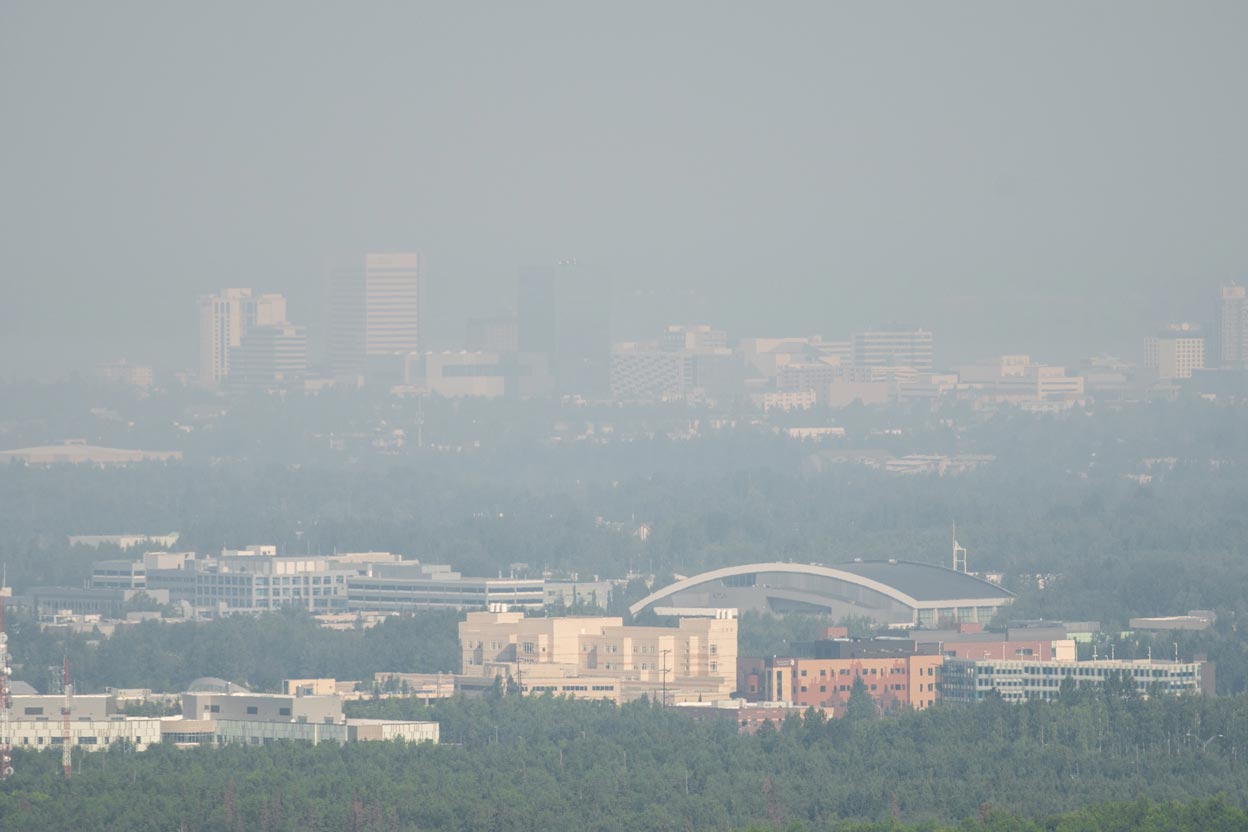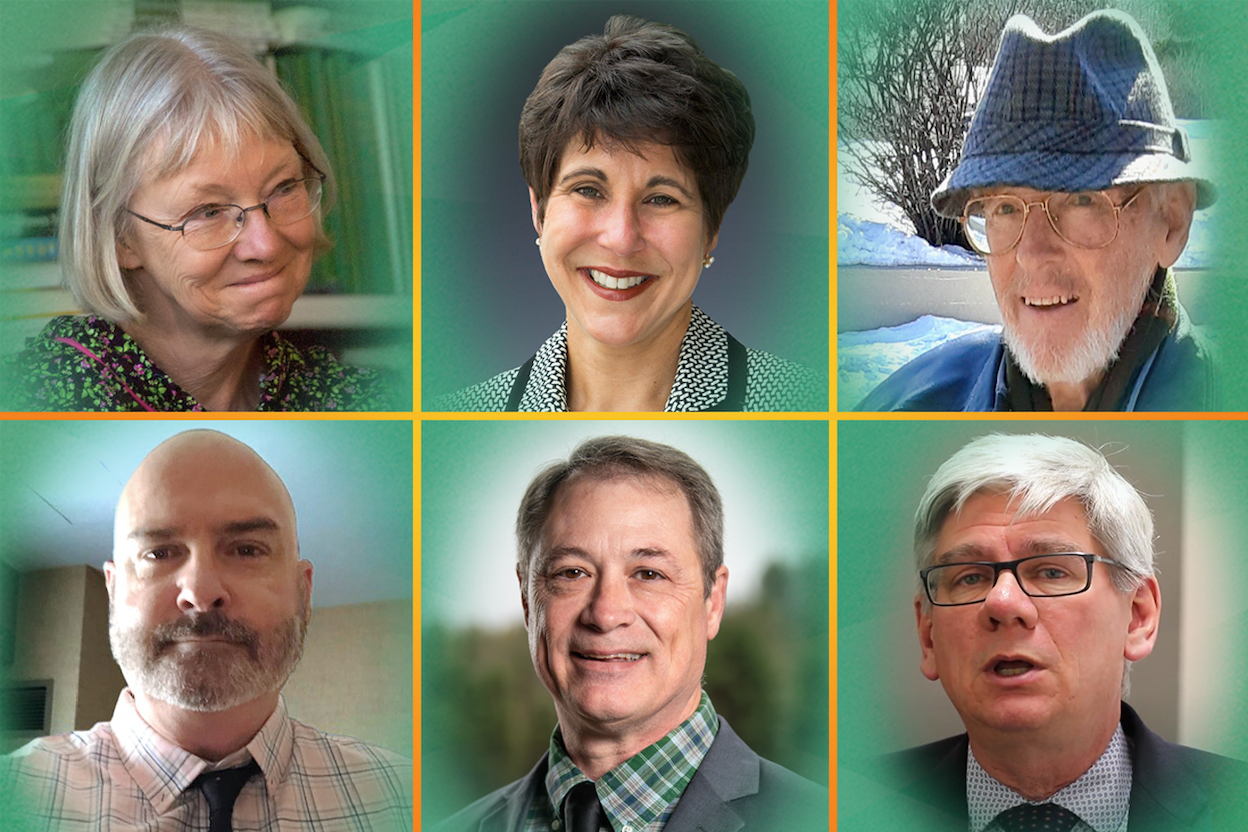New study sheds light on mental health impacts of Alaska’s wildfire season
by Catalina Myers |

In summer 2019, Alaska boasted some of the hottest temperatures the state had seen in decades. Record-breaking temps not only had Alaskans running to their local hardware stores for house fans, but the arid conditions kept fire crews inundated from summer to fall.
Micah Hahn, Ph.D. and assistant professor of environmental health in UAA’s Institute for Circumpolar Health Studies, recently co-released the preliminary results of the Southcentral Wildfire Study. She teamed up with researchers at John Hopkins University to study the mental health impacts wildfire has on Alaska’s residents. Funded by the Bloomberg American Health Initiative, she and her team of five specifically focused on the 2019 Swan Lake wildfire that ignited from a lightning storm in early June and burned through late September on Alaska’s Kenai Peninsula. Although there is much research on the environmental impacts of wildfire, according to Hahn, the mental health impacts are a relatively new area of study.
“It seems obvious now that we've been working on it — during natural disasters, we’re so focused on physical safety because it seems so immediate — but I see now how easy it is to forget about mental health,” said Hahn. “Just like you can prepare for physical health impacts by following firewise guidelines, you can also prepare for mental health impacts.”
Wildfire season is not unfamiliar to the 49th State, but since the early 2000s, wildfires in Alaska have become more frequent and extreme. Between 2001 and 2020, 31.4 million acres burned statewide, two-and-a-half times more than what burned in previous decades.
Currently, more than 80% of Alaskans live in areas considered high wildfire risk. As the state’s temperatures continue to rise and summers trend hotter and drier, fire season begins earlier, ends later, burns more acres and is expanding into new areas.
But 2019, according to Hahn, was exceptionally challenging, particularly when it came to the Swan Lake wildfire, which burned 12,700 acres of the Kenai National Wildlife Refuge. Although residents on the Kenai Peninsula were the most greatly affected, Anchorage and Southcentral Alaska experienced heavy smoke throughout the summer.
“We wanted to learn how that fire season affected residents’ mental health and were also interested in looking at how those impacts differed if you lived in Anchorage versus down on the Kenai,” said Hahn.
Hahn and the research team acquired most of their information through interviews with people in Anchorage or Kenai. The first round of data collection included what is known as “free list interviews.” Participants were surveyed and answered questions ranging from health and wellness topics to transportation and, specifically, what issues they experienced during the Swan Lake wildfire.
The study was designed so that each subsequent step built upon the previous one. One stage of the study brought a subset of participants together for a community workshop. Hahn’s team asked participants to whittle down the list of problems identified in the individual interviews to what they believed were the top 10 issues. According to the study, number one was lack of communication.
“People felt like they didn’t know what was going on,” said Hahn. “People really felt like they were in the dark. Not surprisingly, it caused a lot of stress for everyone.”
In addition to asking participants to identify problems, Hahn and her team also asked participants what their coping strategies were. Mentally preparing escape routes, reaching out to authorities for support or finding spaces where they felt less closed in were some of the top strategies employed. Hahn said a surprising response from many living in the thick of the wildfire, was that they found reprieve in their shower.
“People felt like they could breathe freely in there,” said Hahn. She also said commiserating with friends who were also experiencing the fire was a top coping strategy. “We listed [in the study] all the problems people were facing and then also made a list of how they were all dealing with it. In addition to identifying the problems, we also wanted to find solutions.”
Additionally, Hahn and her team hosted a workshop with both behavioral health providers and firefighters — two groups that don’t generally overlap professionally — but together provided valuable insight for the study.
Surprisingly, the behavioral health providers and firefighters also listed communications as one of their top issues. As a result, they suggested enhanced communications earlier on with residents, creating strategies for equitable access to information for various demographic groups, and involving the community more — mainly when it came to evacuation planning.
In April, Hahn and her team presented their findings of the Southcentral Wildfire Study in a public Zoom meeting, which was posted on the group’s Facebook page. She said the team will spend this summer analyzing data and writing up their results. She hopes their study will be helpful for residents and mental health professionals in Alaska and beyond as they develop strategies to cope with wildfires and other natural disasters.
“Alaska has a lot of natural disasters, and we realized through this study the importance of having a good mental health infrastructure,” Hahn said. “It was agreed that we generally need more behavioral health providers, and this study helped expose a gap I think we know we
 "New study sheds light on mental health impacts of Alaska’s wildfire season" is licensed under a Creative Commons Attribution-NonCommercial 4.0 International License.
"New study sheds light on mental health impacts of Alaska’s wildfire season" is licensed under a Creative Commons Attribution-NonCommercial 4.0 International License.













